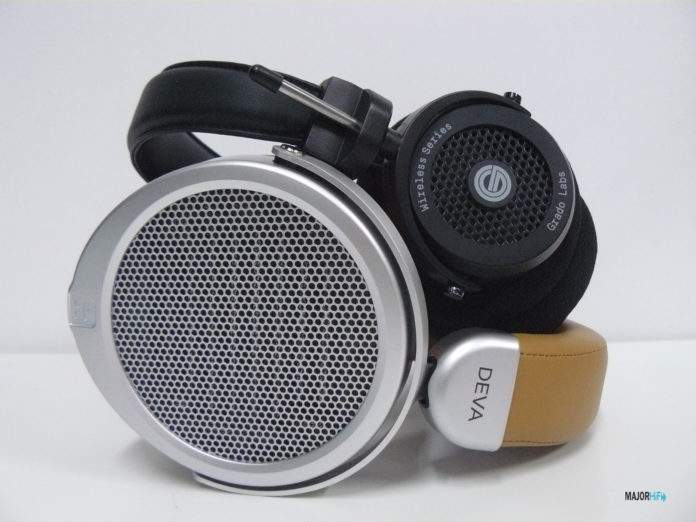There aren’t a ton of wireless open-back headphones out there, but who better to deliver than Grado and HIFIMAN. Both of these manufacturers have become synonymous with open-back headphones, with HIFIMAN proficient in planar design, and Grado in dynamic. Recently, I took a look at the HIFIMAN DEVA, one of the few planar magnetic wireless headphones. I had a lot of great things to say about its sound signature and thought it would be great to look at it in direct comparison to Grado’s GW100. If you’re looking for a wireless headphone that’s open-back, which one should you choose?
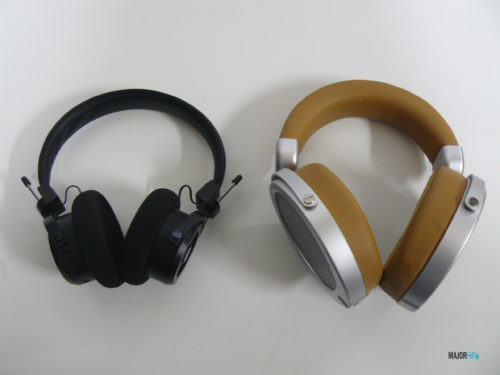
What You Get
Both Grado and HIFIMAN keep to their packaging traditions no matter what kind of headphone model it is. Grado still opts for their white cardboard boxes and HIFIMAN with their silky interiors that provide sufficient protection. They both come with USB charging cables, but the DEVA provides USB-C while the GW100 supplies micro USB. So the DEVA will provide faster charging, as well as connection to some laptops and smartphones.
3.5mm cables are also offered, which incidentally makes this the only Grado headphones that comes with a detachable cable. However, the DEVA still gets the leg up here for providing a quarter-inch jack. It should also be said that the DEVA uses a wireless adapter for its Bluetooth connection that also works as a DAC/Amp to power that planar driver. This is something that the GW100 doesn’t need, and on the positive side, no other accessories are necessary to get a wireless signal from the headphones.
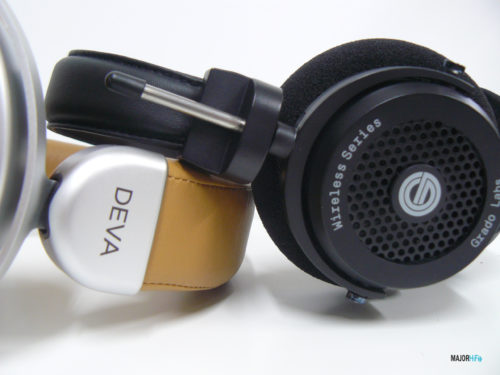
Look and Feel
On the outside, it wouldn’t seem like the DEVA wouldn’t even compare to the GW100 in terms of build quality, but this is where it actually falters the most. The DEVA’s open-back grill and large earpads look and feel nice, but the quality of the materials used to support them are poor. Especially the plastic parts that support the earcups and headband, They make the cups swivel around flimsily.
Grado has always had a similar DIY aesthetic for its headphone selection, and that idea is kept here. They also use plastic parts, but the difference is how those parts are implemented. The earcups swivel, but with the flat cups needs that freedom to provide the most ideal fit. The GW100 overall feels sturdier than the DEVA. I wouldn’t go throwing them around to test it out, but just holding both pairs in my hand I can notice the difference. In terms of comfortability, both headphones provide a light and cozy fit. I’ve gotten more used to Grado’s cups over time, but compared to the DEVA it just comes up a hair short.
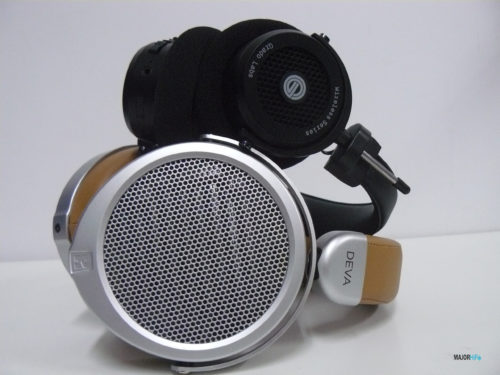
Design
When it comes down to how both of these headphones construct their driver system, the DEVA has the more interesting makeup. Their superNano diaphragm is an interesting configuration, but we’d be comparing dynamic to planar, which is mostly based on personal preference. The GW100 is going to have that simpler drive rebuild that you’re used to, providing a stable signal with a comfortable amount of loudness. Although the DEVA is planar, the amount of power the Bluemini provides is almost a little overboard. If my iPhone doesn’t even need that much power then nothing will.
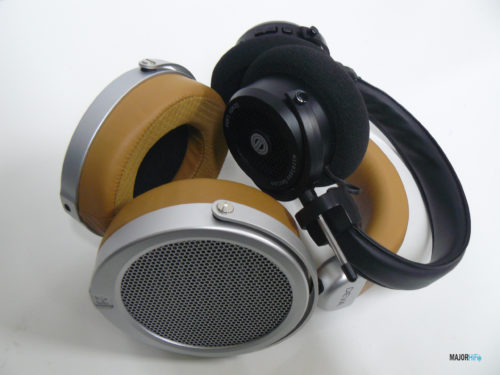
Bluetooth
The DEVA has the GW100 clearly beat here. The CODECs supported are a lot more vast, including LDAC, and aptXD, which are superior to Grado’s single aptX capabilities. It also uses a now-outdated version of Bluetooth in 4.2, so you won’t get as high bandwidth or range on the GW100.
Battery Life
Grado takes another step up over HIFIMAN with the GW100’s battery life, with the GW100 offering 15 hours of playtime over the DEVA’s 7-10. Both models don’t exactly have the meatiest playback time compared to other headphones in this price range, but the GW100 definitely offers the better juice.

Soundstage
Being that both of these headphones are open-back, the soundstage is already going to be more impressive than most wireless models. However, things get really interesting when comparing the DEVA’s planar to the TW100’s dynamic driver. With the DEVA, the width that the planar reproduces is a lot airier than its dynamic counterpart. It encompasses a larger portion of your headspace and the stereo image features a lot more expansion.
In direct contrast, the GW100 features the strongest depth, creating not only a livelier sound but a more complete one. It finds the perfect balance between energetic imaging and spatial width, whereas the DEVA sometimes makes certain sounds appear distant. This isn’t necessarily a criticism against the DEVA, as classical music, film scores, and ambient, or atmospheric tracks end up being big standouts here. I just think the GW100’s stage has a better grasp on musicality, and more listeners might find that sound more friendly to their tastes.
Low End
While the DEVA finds more impressive ways to dive deep into the details of its bass, the GW100 expresses more naturalistic features. The DEVA is multilayered and is very clearly defined, but the GW100 will have more of that textured feel you might be more used to with your wireless headphones. You’ll get some good impact with both models, but the GW100 has a more forward, thicker response.
Mids
Like the natural lows on the GW100, the DEVA actually provides this response in their mids. IN this area the GW100 focuses more on accuracy and brings the mids bands up to the front. The DEVA aims for a warmer texture in the mids that really pops with acoustic performances, as well as strings. It also receives more of a lift in the upper mids as well, showcasing vocal strength and detail. In comparison, the GW100 shows some strengths, but it takes more getting used to than the DEVA and benefits more from attentive listeners.
Highs
If you’re not a fan of peakier highs, then I’d stray away from the DEVA. However, I thought some of the treble textures offered a good amount of detail, even if it’s improved in other planars. The GW100 also leans a little bright, but with more sparkly textures, making for a much more gratifying response. Its a much more colorful texture compared to the DEVA’s flatter output, but the more treble sensitive listeners might be mixed with both headphones.
Summary
It’s a tough comparison, but at the end of the day, it’s all about taste. Both headphones showcase all the pleasures of open-back style sound signatures for wireless convenience, which is the main goal for both products. Both Grado and Hifiman succeed in this regard, while also introducing open-backs to a wider audience. It really comes down to whether you prefer planar or dynamic, but I think the GW100 does a slightly better job of presenting an immersive sound signature that doesn’t sacrifice musicality in my opinion. Although I think Grado presents a better headphone more appealing to consumers, Hifiman makes a valiant effort with the DEVA, and has the opportunity to introduce planar to a larger audience.
Specs
| GW100 | DEVA | |
| Frequency Response | 20Hz-20kHz | 20Hz-20kHz |
| Impedance | 32Ohms | 18 Ohms |
| Transducer Type | Dynamic | Planar |
| Battery Life | 15 Hours | 7-10 Hours |
| Bluetooth CODECS | SBC, AAC, aptX | LDAC, aptX, aptXHD, AAC, and SBC |
| Sensitivity | 99.8dB | 93.5dB |
The Grado GW100 and HIFIMAN DEVA are available at Audio 46.
MAJORHIFI may get a commission from retail offers.
Compare the ranking of various headphones, earbuds and in-ear monitors using our tools.
Discuss this, and much more, over on our forum.
---MAJORHIFI may receive commissions from retail offers.


